#alpine upland
Text
Goldenrods
It’s nowhere near the fall hayfever season, but I thought I’d PSA anyway.
Hayfever is caused by RAGWEED (Ambrosia artemisiifolia and Ambrosia trifida where I live).

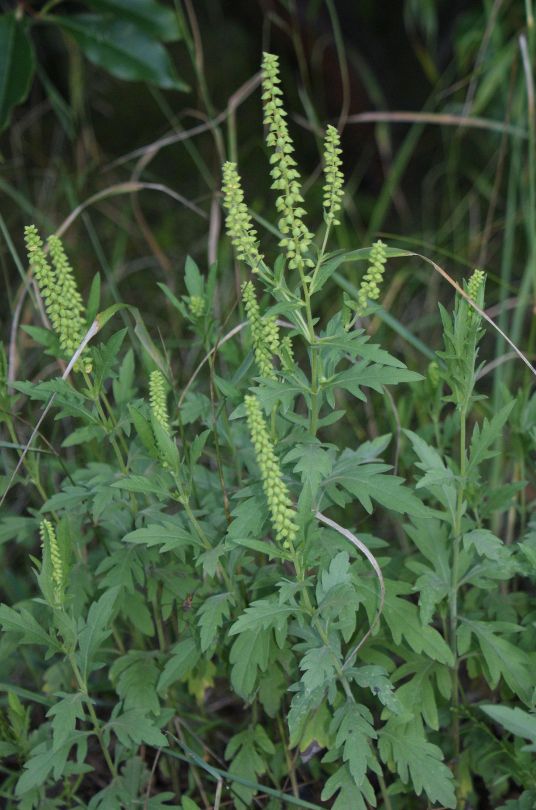
NOT. Goldenrod (Solidago, Oligoneuron, Euthamia). It is impossible for goldenrods to even cause hayfever since their pollen isn’t released to the wind. Goldenrods are beautiful, with some edible parts, some medicinal properties, and middle of summer through fall pollenators love them.
Non-exhaustive list of goldenrods
Euthamia graminifolia (Flat-top goldenrod):

Oligoneuron rigida (Stiff goldenrod):

Solidago bicolor (Silverrod):

Solidago caesia (Blue-stem goldenrod):
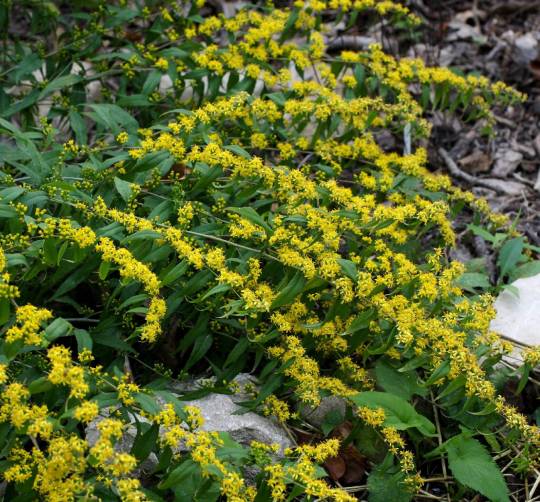
Solidago canadensis (Canada goldenrod):

Solidago flexicaulis (Zigzag goldenrod):

Solidago juncea (Early goldenrod):
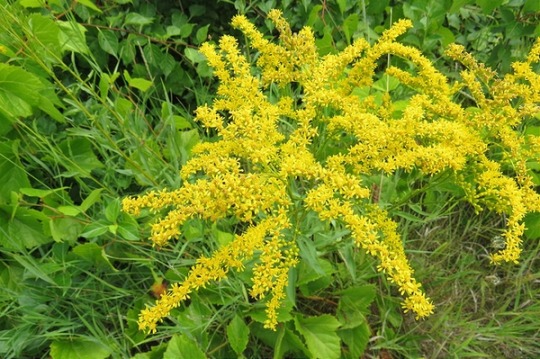
Solidago missouriensis (Prairie goldenrod):
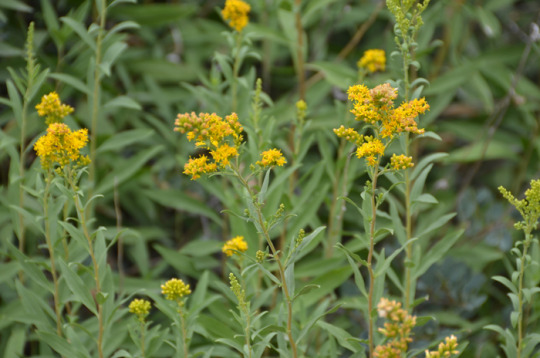
Solidago multiradiata (Alpine goldenrod):

Solidago nemoralis (Gray goldenrod):

Solidago odora (Anise-scented goldenrod):

Solidago ohiensis (Ohio goldenrod):

Solidago patula (Rough-leaf goldenrod):
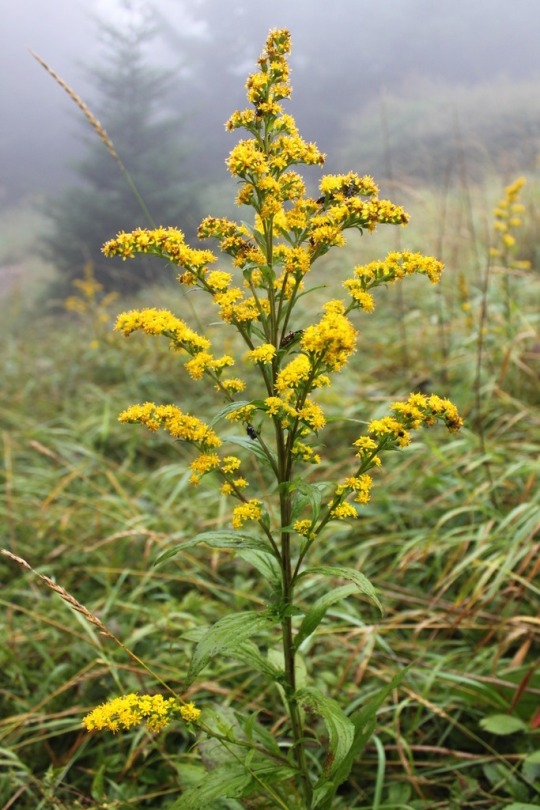
Solidago ptarmicoides (Upland white aster):

Solidago rugosa (Wrinkleleaf goldenrod):
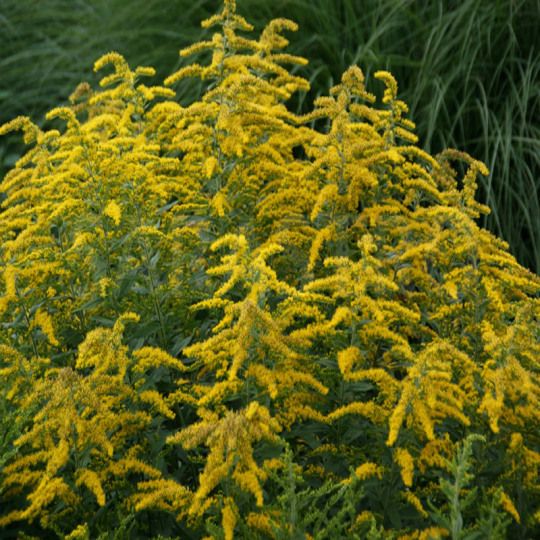
Solidago simplex (Spike goldenrod):
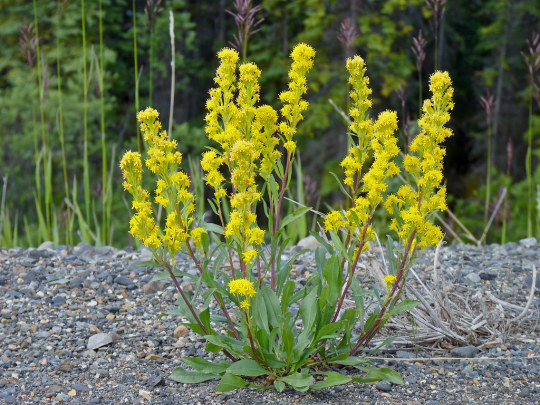
Solidago speciosa (Showy goldenrod):
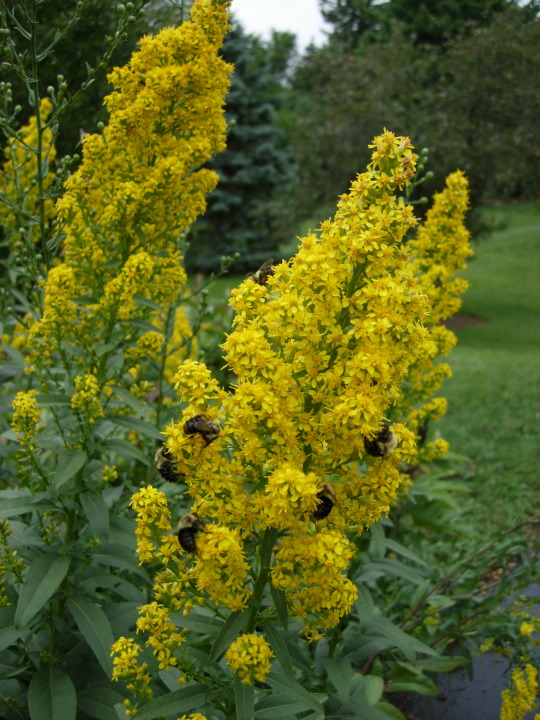
Solidago uliginosa (Bog goldenrod):
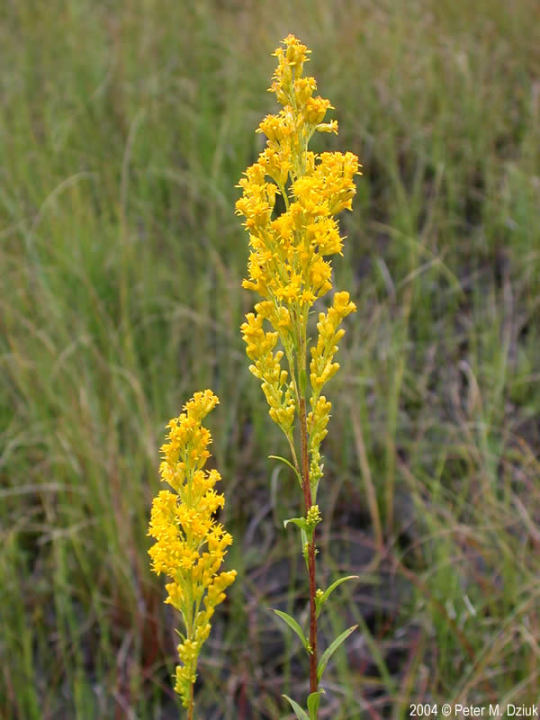
The only drawback is that many goldenrod species spread a lot and quickly if you don’t keep on top of those rhizomes. But if you need to fill a space in a relatively short period of time, why not try some in your garden? They’ll grow up green through spring and summer and put on a show in the fall (earlier depending on the species)!
#long image post#goldenrods#hayfever#ragweed#Ambrosia#Solidago#Oligoneuron#Euthamia#flowers#yellow flowers#native species of North America#North American native plants#pollinator plants
18 notes
·
View notes
Text
Adam the Apothecary (Octopath OC)
"Master gave me the gift of life, now I must return the favor."
Links to previous: Osanna the Cleric, Clyde the Merchant, Tusitala the Dancer, Opal the Thief, Penelope the Scholar
Name: Adam
Job: Apothecary
Gender: Masc (Equally male and female, but most people assume male and he accepts that)
Element: Lightning (Spell: Galvanize)
Latent Power: Advanced Chemistry (materials impart additional abilities to concoctions)
Appearance: Slim but extremely muscular (as opposed to Tusitala's more bulky build). Wears a long coat with no shirt, showing his many scars. Long blonde hair and feminine facial features contrast with his build.
Friendly Action: Inquire
Unfriendly Action: Press (Gain followers by defeating in combat)
Starting Region: Uplands. The requisite mountainous region, though again I want to make it more colorful than past versions. Lots of alpine meadows full of flowers.
Starting Town: Blaumberg. A place with a lot of the aforementioned flowers. It's a dilapidated castle town, being largely abandoned and reclaimed by nature. Should give a feeling of melancholy and fallen grandeur. Allied with Noland, but independent.
Starting Story: Adam was created by his master an uncertain time ago. His master taught him and cared for him, but one day left on a journey and never returned. He's been taking care of the castle on his own and studying medicine ever since. Noland forces arrive to steal his master's research and set the castle on fire. He confronts their leader, who tells him that his master is dead. But he refuses to believe it, and sets out to find the truth.
Goal: Find his master and figure out the secret of his own resurrection so that if they are truly dead, he can bring them back.
Battle Motif: "To Restore Life," a dramatic and gothic piece emphasizing the pipe organ.
Adam's character came about when I was shuffling around the jobs and elements. For two games, Lightning has been the purview of Hunters, but I thought it'd be cool to shake things up. As soon as I thought of the lightning + apothecary combination, the answer became clear. BTW, his path action "Press" is him just grabbing someone and saying "I need your help." The typical response is "D...do I have a choice?!"
I worry that in this concept I'm leaning on the two greater antagonists too much. After all, I'm on #6, and 4 of them have been directly opposed to one of the two empires, with the remaining two skirting the line between them. But it also makes the themes more cohesive, and ties into the way I'm doing the split path actions, which I promise I will explain at the end.
Adam has probably changed his motivations more than any other. I've hopped from trying to cure death, to revenge against his master, to trying to save his ailing master, and many more. I finally settled on him in the same ballpark as H'aanit. A complicated relationship to someone he really cares about, but feels abandoned by.
1 note
·
View note
Text
Exploring the Magnificence of Nature on the Trails While Hiking in Idaho
Idaho, an outdoor lover's paradise, is a hidden treasure in the Pacific Northwest. Hiking is a great way to experience the natural beauty of the state. Idaho has a wide variety of hiking trails suitable for walkers of all skill levels, from majestic mountains to placid lakes. Everybody may find something to enjoy on Idaho's hiking routes, whether they are experienced hikers looking for a difficult summit or casual walkers longing for a picturesque stroll.
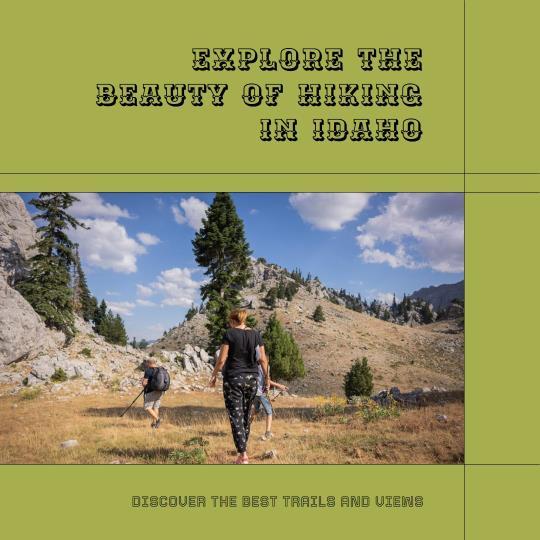
Natural Playground: Idaho's Varied Hiking Paths
There's always adventure to be had when hiking in Idaho. Snaking through verdant woods, mountain meadows, and craggy gorges, the state boasts more than 19 million acres of national forest. With almost 700 miles of trails crisscrossing the magnificent Sawtooth Mountains, the Sawtooth National Recreation Area is known as a hiker's paradise. To reach the stunning alpine lake that reflects the craggy peaks, hikers can embark on the well-known Sawtooth Lake Trail, which winds through woodlands fragrant with pine.
Seeking a legendary trip, the Frank Church-River of No Return Wilderness is calling. With the Middle Fork of the Salmon River Trail, it is well-known for its size and offers a strenuous but worthwhile trip. Enduring views of a variety of fauna, including spectacular bald eagles soarng above the canyon walls and elusive mountain goats, the trail leads through immaculate nature. An opportunity to commune with nature, escape the busyness of everyday life, and experience the wild beauty that Idaho abundantly provides, hiking is more than just a physical exercise when done in the state.
Idaho Motorcycling: An Exciting Substance
Motorsports in Idaho offer an alternative for those seeking action, while hiking captures the serenity of Idaho's countryside. With options for off-roading, dirt riding, and snowmobiling, the state's mountainous landscape is a motorsports enthusiast's playground. For those who enjoy off-roading, the 10,000+ acre St. Anthony Sand Dunes are a sacred place. Visitors can enjoy an amazing and thrilling experience here as they explore large expanses of golden sand dunes.
Idaho allows motorcyclists to go off-road. A winter's passion, snowmobiling aficionados swarm the state's blanketed landscapes. A winter wonderland emerges in the Island Park area, which is encircled by the majestic Rockies. Long, well-maintained routes offer a thrilling experience for snowmobilers of all skill levels among a peaceful, snow-covered environment.
In front of snow-capped peaks, the Sawtooth National Recreation Area offers snowmobile options for people looking for a combination of stunning views and high excitement. Drive fans have the opportunity to experience the natural beauty of Idaho in a way that combines the excitement of high-speed adventures with the tranquility of hiking thanks to the state's diverse motorsports sector, which is as varied as its topography.
Idaho Hunting Licenses: Protecting Wildlife and Customs
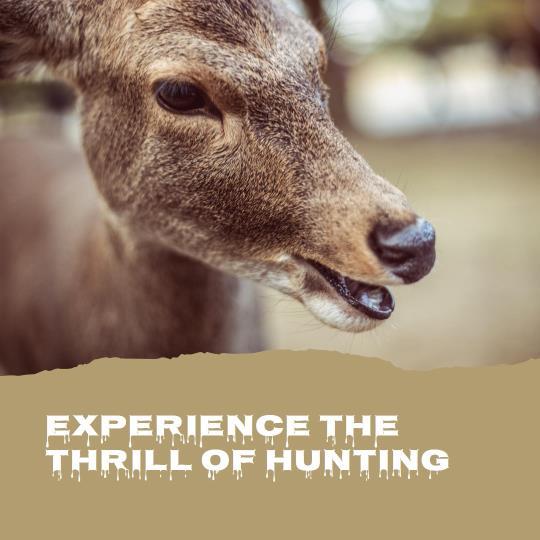
Hunting aficionados also find refuge in Idaho's immense wilderness, in addition to hikers and motorsport enthusiasts. Numerous game animals, such as deer, elk, and upland birds, are part of the state's great biodiversity. The Idaho Department of Fish and Game operates a hunting access permit system in order to support sustainable hunting practice and the preservation of animal populations.
These licenses are essential for controlling and protecting Idaho's wildlife and are frequently needed to enter specific regions. Assuring the long-term viability of the state's ecosystems and preventing overharvesting, they assist in controlling the number of hunters in particular areas. Hunting licenses in Idaho allow hunters to explore a variety of landscapes and provide an opportunity for ethical and sustainable hunting, whether it is the rocky mountains of the Bitterroot Range or the rolling hills of the Palouse region.
Idaho's hunting access permit system mirrors the state's dedication to striking a balance between the needs of protecting the natural heritage and the interests of hunters, as the state values both tradition and conservation. Using this method helps to maintain Idaho's wildlife populations while preserving the excitement of hunting for future generations.
An intricate network of paths, each providing a distinctive experience, allows Idaho to reveal its treasures. The varied terrain of Idaho is vividly depicted by hiking, motorcycling, and hunting. Adventurers seeking to discover the state's splendor in various ways are drawn to its rough mountains and expansive sand dunes. Therefore, Idaho's trails provide something for everyone, whether you're hunting in a secret location, scaling mountain summits, or firing up an off-road vehicle. There's no denying that Idaho's trails are enchanting, drawing travelers to explore the breathtaking vistas that appear around every corner, whether the sun is setting over the Sawtooth Mountains or the snow is covering the St. Anthony Sand Dunes.
0 notes
Text
Benefits of Going to Yunnan in China for a Birding Trip
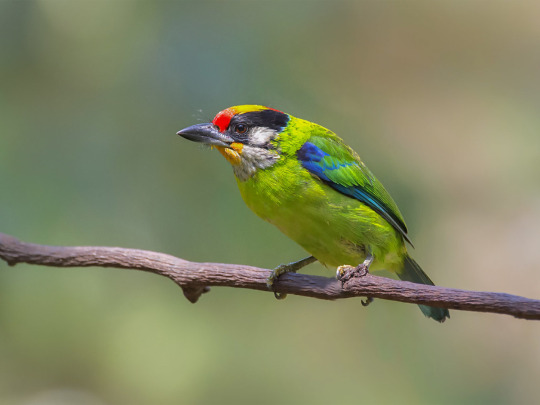
Watching birds live their lives in their natural homes can be extremely relaxing for anyone. If you are wondering about going on a bird watching trip to an exotic country, then you should think about booking one of the popular Yunnan birding tours in China. Yunnan is popular for its rich biodiversity and its extensive natural landscapes are home to hundreds of different types of birds. Going on a bird watching trip to a different country also allows you to enjoy the benefits of traveling while you enjoy delving into your passion for observing the birds.
Bird Species in the Yunnan Region
The Yunnan Province of southwestern China is home to more than 900 species of birds. The lakes, mountains, plateaus, plains, and wetlands create a unique environment that provides the perfect space for these birds to grow and thrive. So when you come down to the birding sites in and around the Yunnan Province, you can see many different types of pheasants, hornbills, babblers, laughingthrushes, and parrotbills. The popular birds in the Yunnan Province include the White-cheeked Partridge, Kalij Pheasant, Great Hornbill, Long-tailed Broadbill, Golden-throated Barbet, and Lady Amherst’s Pheasant.
Major Attractions of a Birding Trip in Yunnan
Have a look at the main highlights of your birding excursion to Yunnan.
Visiting the Kunming Botanical Garden and Zixi Mountain Forest Park
Kunming Botanical Garden is a huge garden that offers a nice habitat for different types of resident and wintering birds, such as Red-tailed Minla, Red-billed Leiothrix, Blue-winged Minla, and Japanese White-eye. The Zixi Mountain Forest Park is yet another popular site in the region that is known for its unspoiled natural beauty. It is also the home to many popular birds in the Yunnan region.
Gonggangling
Next, you can visit the lush Alpine forests of Gonggangling covered with coniferous trees. These trees are home to numerous forest birds, such as the Sichuan Wood Owl, Blue Eared Pheasant, Blood Pheasant, Chinese White-browed Rosefinch, and Three-banded Rosefinch.
Ruoergai
Ruoergai is an extensive grassland spreading across the Tibetan Plateau that offers stunning views of the surrounding mountains. It is the perfect place for you to go for a nice drive. When you are here, you can spot some of the local birds, such as the Himalayan Griffon, Amur Falcon, Upland Buzzard, Common Kestrel, and the Black Kite.
Importance of Availing Custom Birding Trips
Exploring the unique sights and sounds of the Yunnan region can be an unforgettable adventure that is going to leave a lasting impact on your senses. However, you need some professional help to get there and visit the numerous notable birding sites for which the Yunnan region is so famous. Consulting with a reputed tour operator like Alpine Birding can help you to know all about the region in advance so that you can plan your trip properly.
Whether you take an academic interest in birds, love to watch them in their natural surroundings, or are an avid photographer, you can benefit a lot from booking a curated birding trip to China’s Yunnan Province.
0 notes
Text
Scaling the Heights of Friendship: Conquering Mt. Friendship Peak Expedition

One of the most famous summits for trekking in the Indian Himalayan region, the Friendship peak looming at an elevation of 5,289 metres in the Pir Panjal range in Himachal Pradesh is a trekker’s paradise. From the summit, one can feast his eyes on the panoramic view of the Pir Panjal range, against the back of silver horizons formed by the Dhauladhar and Great Himalayan ranges. The Friendship Peak Trek is one of the most challenging treks in Himachal Pradesh and before trekking here, one should have prior high experience of travelling at high altitudes.The trek, which extends to the friendship peak, encourages aspiring mountaineers and those looking for a challenging trail to enjoy the tranquility and grandeur of the Pir Panjal range. The road winds through the lovely Solang valley, which itself is thickly forested with a variety of alpine tree species, alongside numerous lavish streams leading to upland pastures, before climbing to the frozen surface with extensive tilts and crevasses. The view from the top is stunning, with snow-capped mountain ranges and endless vistas.
visit us - Mt. Friendship Peak Expedition
1 note
·
View note
Text
Bliss
Alpine flowers
always thrilled you
the way they splash
fabulous colour
over an upland meadow
but are never gaudy.
You’d drive all day
negotiate the hairiest bends
high into the mountains
for a glimpse of their splendour.
A field of lavender
could move you
like I couldn’t.
I have a snapshot
of you wading
in blooms
your smile is sky-high
your joy is unsurpassable.
Robert James Berry
1 note
·
View note
Text
Copper Butterflies
This is by no means all Copper butterflies as I believe there are sixteen species at the very least.
Number one : Large Copper

The picture above is a male. Females have slightly less bright orange background colour to the forewings, with dark spots and a border. The underside of the wings are grey and spotted.
This species was once widespread among Europe but has become increasingly scarce in central and eastern Europe. In western Europe, it still persists in scattered populations in France and the Netherlands. The British form was once fairly widespread in the wetlands of East Anglia, but has been extinct ever since 1864.
It inhabits various types of wetland, including fens and marshes, wet meadows, and borders of lakes and rivers. In the fens of Eastern England, it was associated with traditional practices of peat and reed-cutting, but it became extinct in the middle of the nineteenth century as these practices died out and the fens were drained for arable agriculture.
Attempts to introduce the similar Dutch subspecies to England were successful for quite long periods, while conservation management in the Netherlands seems to have atleast halted the decline of the butterfly.
Number two : Small Copper

The underside of the wings are pale and scattered with darker spots. Whilst the picture above has black spots, others may have blue spots.
This butterfly is one of the most familiar and widespread of all butterflies in Europe, strangely it is not seen in large parts pf central Sweden and Norway, but its quite widespread further north. In Britain and Ireland, they are found everywhere except the uplands of northern England and Scotland.
They find home in dry grassland and heaths with well-drained soils. They are also found on coastal dunes, worked-out sand quarries, roadside verges and urban brownfield sites, usually sparsely vegetated with patches of bare ground.
Males perch prominently and actively challenge passing insects, including females of their own species, which they pursue with a very rapid flight. Females are less active, and lay their eggs on food plants of their caterpillars, either common sorrel or sheep's sorrel, depending on availability.
Number three : Purple-edged Copper

The picture above is a male. Females are brown with vague areas of dull orange towards the middle of the forewings and rows of faint dark spots. The underside of the wing is grey with black spots and a band of orange.
This butterfly is widespread in suitable habitats throughout most of Europe. However, it is not found in Britain, Ireland and northern France.
They favour damp, flowery meadows where the food plants of its caterpillars (sorrel and various docks) grow. Like many meadow species, it is threatened by the spread of intensive agriculture, especially in lowlands.
Number four : Violet Copper
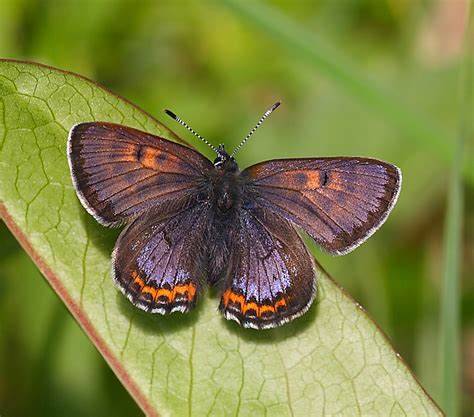
The picture above is female. Females have slightly more purple than their male counterparts.
This rare and beautiful species has only scattered populations in Western Europe, but is more widespread in central and northern Europe, extending northwards to central Sweden , Norway and Finland. It is absent from Britain and Ireland.
It inhabits humid meadows, moist glades, and open banks along streams and bogs in woodland, where the food of the caterpillars grow in abundance. They settle, often with wings open, on leaves of bistort, or take nectar from its flowers.
The females lay their eggs on leaves of bistort or alpine bistort in the north of their range. These butterflies emerge in May, and can be seen until the middle of June. This species is seriously threatened throughout Europe due to drainage and changes in forestry management.
Number five : Purple-shot Copper

This butterfly has several distinct form is different parts of Europe, but the typical form of males in the northern part of its range looks like the picture above with the orange background and black spots, all suffused with violet scales.
It is widespread in southern, central and eastern Europe, but is absent from or vary rare in the north-west. It reaches the northern limit in the Baltic states, where it is very localised. It is absent from Britain, Ireland and Scandinavia.
It inhabits flower-rich meadows, sheltered hollows in hillsides and sometimes open woodland clearings and roadside verges. These butterflies are active, taking nectar from meadow flowers such as ox-eye daisy, and fly in one annual generation from June to the end of July. The caterpillars feed on leaves of sorrels aswell as other plants in the dock family, and have strong associations with ants.
Number six : Sooty Copper
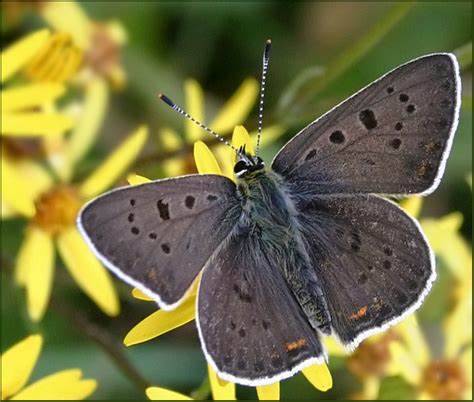
The picture above is a male. Females tend to be similar to males but usually have a more prominent orange border. The underside wing ground colour is fawn or slightly yellowish-brown with black spots, and a black-bordered row of orange lunules along the wing borders. Their wing shape is distinctive with a rather pointed tip to hindwing and relatively narrow forewings, especially in males. Their appearance is quite variable, tending to be darker further north and at high altitudes.
They are widespread and common in most of Europe, reaching north to Denmark and the Baltic states, and apparently now extending its range northwards into southern Finland. It is absent from the rest of Scandanavia, Britain and Ireland.
They're found in dry meadows, open glades in woodland, scrubland and other flowery places where the caterpillars food plant grows. There are just two flight periods, from mid-May to mid-June and again from mid-July to early September. Their eggs and laid on sorrel and probably other plants in the dock family.
1 note
·
View note
Text
All About the Geographical Aspects of Germany – A Comprehensive Guide
Germany has a diverse landscape, with tall, sheer mountains in the south, sandy, rolling plains in the north, forested hills in the urbanized west, and agricultural plains in the east.
We all know that geography can be difficult to learn, but it is also necessary for understanding our surroundings. Fortunately, there are tons of geographical information about Germany that is both easy to remember and enjoyable to learn! Here are 12 astonishing facts about Germany's geography that you may not have known before.
Germany's geography
Enrolling on online German language courses must have fascinated you to learn about the geographical features of Germany. Germany's terrain is diverse, with mountains, lakes, rivers, plains, and forests. Throughout history, German geography has had a significant impact on the country's development.
For a long time, Germany's geography has had an impact on the economy. Germany is a country shaped by its geographical location.
For centuries, people have lived in the area and made a living by fishing in rivers and seas.
1. The Zugspitze is Germany's highest mountain, with a peak elevation of 2.962 meters. It is considered as one of Germany's most popular tourist attractions.

2. Germany is in Western Europe, between the North Sea and the Baltic Sea. The land is 357,580 km2 (138,062 mi2) in size and has 2,389 km of coastline (1,484.5 mi). About 89% of the land area of California is in this area. So, Germany is the 64th largest country in the world and one of the largest in Europe.
3. Denmark borders Germany on the Jutland peninsula in the north. The Baltic Sea (Ostsee) and North Sea (Nordsee) coasts, respectively, complete the peninsula's northern border. Germany borders the Netherlands, Belgium, and Luxembourg to the west, and France to the southwest.
4. Germany has a mild climate all year round, with an average temperature of nearly 17 degrees in July and -0.5 degrees in January.
The highest temperature ever recorded in Germany was 42.6 degrees in Lingen in 2019.
5. From a hydrological perspective, the landmass of the Federal Republic of Germany can be broken down into seven distinct regions: the Danube, Rhine, Ems, Weser, Elbe, and Oder River basins; the tributaries of the Meuse River (Donau, Rhein, Ems, Weser, Elbe und Oder, die Zuflüsse der Maas; the North Sea coast; and the Baltic Sea coast.
6. Germany shares land boundaries with nine other nations. All of the Scandinavian countries, plus Poland, the Czech Republic, Austria, Switzerland, France, Belgium, Luxembourg, and the Netherlands.
7. Small sections of the outer limestone (or calcareous) Alps extend from Austria into Germany. They are the Allgäuer Alps, the Wetterstein Alps (with Germany's highest peak, Zugspitze), and the Berchtesgadener Alps, in that order from west to east.
8. Most German rivers follow the general slope of the land, which is north-northwest, and end up in the North Sea. The Danube, which starts in the Black Forest and flows east, is the main exception to this rule. It forms the border between the Central German Uplands and the Alpine Foreland. The Danube gets its water from a series of right-bank Alpine tributaries that depend on spring and summer snowmelt to flow. This makes the Danube's flow very uneven.

9. Germany has a small number of lakes. The shallow lakes in the postglacial lowlands of the northeast have most of them. Lake Müritz in the Weichsel glacial drift of Mecklenburg–West Pomerania is the largest natural lake in the area. It covers 44 square miles (114 square km).
10. Germany imports most of its raw materials because it doesn't have many natural resources of its own. The nation yields a lot of bituminous coal and brown coal (lignite). The main fields of brown coal are west of Cologne, east of Halle, south and southwest of Leipzig, and in Lower Lusatia in Brandenburg. Salt and potash are also found in large amounts and are mined near the Harz mountains.
11. Germany's forest area encompasses about 11.4 million hectares, which is about one-third of the country's land area.
12. Germany has a temperate and marine climate, with cold, cloudy winters and warm, sunny summers. In the south, warm föhn winds sometimes blow. Most of Germany is in a cool-to-warm climate zone, where humid winds from the west are most common.
The largest country in the European Union takes up a little more than a quarter of Central Europe. It has many rivers and lakes and is home to many big cities. Germany is a country in Europe. Knowing important facts about its geography helps us figure out how it came to be. Human history has been changed by geography. It's interesting and fun! Learn German online with native teachers and share these important facts to help others know about Germany’s geography.
0 notes
Text
Ruby animal wandering willows

It can be easily identified by its straight spike of white-pink flowers and kidney-shaped leaves covered in a waxy layer-no other plant in the park has this combination of characteristics. Grizzly bears love to frequent these shrub-covered landscapes for bearflowers, also known as Richardson’s brookfoam ( Boykinia richardsonii). Leatherleaf is commonly found here, and the white-crowned sparrow can be seen foraging for insects and seeds on the ground and from branches of the shrubs. Settled between the alpine zone and boreal forests, shrubs are around 20 to 150 cm tall. This indicates that soils also have more moisture in this landcover type. Tussocks are areas of raised solid ground in bogs that are held together by root systems, and are common here. The last type of low shrub landcover is mixed with sedges. Upland sandpipers and moose will also make appearances as they scavenge for berries and food. Dwarf birch is the most common plant here, along with crowberries and labrador tea, which are pictured in the quilt. Blueberry patches can be scattered among the shrubs.Īnother low shrub landcover is mixed with ericaceous willow and sits below the alpine zone and above the boreal forest, most commonly on slopes of foothills and broad valleys. This landscape is almost completely covered in shrubs, most of which American dwarf birch. They are also known for having different song “dialects” based on where they are from. Though it spends its summer in northern habitats such as Alaska, these sparrows migrate south for the winter. The white-crowned sparrow is well-known for whistling and buzzing through the low vegetation. Grasses and sedges such as cow parsnip and bluejoint grass can also be found here. This landcover type is most frequently found around mid-elevation alluvial stream deposits and near small streams, making dispersal of seeds easy. Willows are insect- (often bumblebee-) pollinated and produce a large amount of seeds which are dispersed by wind and water. Six species of willows dominate the overstory of willow landscapes, including the Alaska willow. Green false hellebore and devil’s club are two other plants that can be found in the understory here. This allows alders to grow in less fertile habitats because they are able to take up more nutrients from the soil. The alder plant forms a team with bacteria in the soil-called a symbiotic relationship-in order to take nitrogen from the ground instead of the air. In fact, over ¾ of the plants found in this landcover type are alder species! This genus ( Alnus spp.) is special because it has the ability to fixate nitrogen. Steep rocky slopes made up of glacial sediment can be found throughout the park, creating prime habitat for various species of alder shrubs. Lady slipper orchids and dwarf dogwoods can be found scattered throughout the understory. Black spruce trees Found at lower elevations north of the Alaska Range, soils are cold and poorly drained with abundant permafrost. It was also historically used to treat ailments such as asthma, diarrhea, pneumonia, sore throats, and headaches, depending on the region of the country. Bog Labrador tea leaves were even used by Native Americans across the country. Plants like bog blueberry and labrador tea dominate this landscape, filling the air with fragrances. Alluvial fans-or cone-shaped deposits of gravel-and outwash-floodplains created by rivers offer excellent conditions for this landcover type.Ī stroll through the stunted spruce forest is certainly a feast for the nose. Red-backed voles and lynx can also be found wandering through the black spruce, labrador tea, and alders. Flashes of red feathers through the air offer clues of ruby-crowned kinglets and white winged crossbills, collecting insects and conifer seeds, respectively, in this more open forest. Frequently fires sweep across this landscape, but fire can help release seeds from black spruces’ semi-serotinous cones. In contrast to the dense spruce, trees in open spruce forests usually only grow around 7.5 meters tall. In the spring, male black-capped chickadees bring food back to the female and young and on the south side of the Alaska Range black bears roam the forests with their cubs. White and black spruce dig plant their roots into the sandy soil and dominate the densely-forested landscape, where the trees can be over 20 meters tall! Tamaracks and shrubs such as alders and willows grow wherever sunlight comes through.

1 note
·
View note
Photo
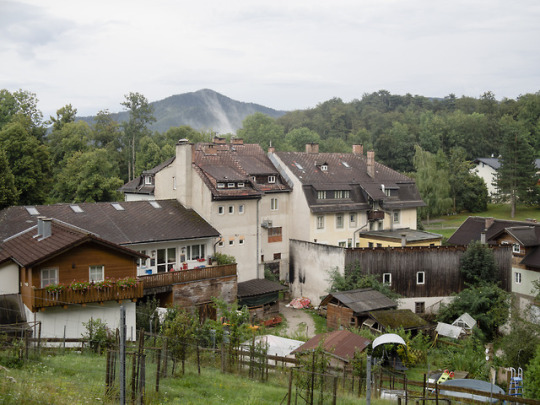
behind the scenes – hamlet in alpine upland after a summer rain.
mariahilfberg near gutenstein, lower austria // 08-2018
© 2018 waidwund-photo
#photographers on tumblr#original photographers#alpine upland#austria#gutenstein#mariahilfberg#photographers on lensblr#waidwund photo#josch schlegel#traces of human life
21 notes
·
View notes
Photo
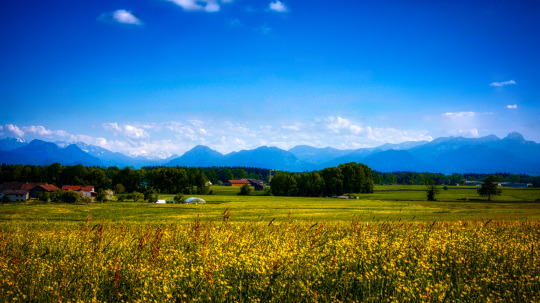
© Carina Klinger • May 2013 deviantArt • tumblr • instagram
#alps#alpine#landscape#scenery#prealpine uplands#uplands#germany#bavaria#bavarian#nature#mountain#mountains#spring#springtime#meadow#pasture#sky#summer#summertime#afternoon
4 notes
·
View notes
Note
Dear Eva,
I Just wanted to let you know that I am a huge fan of your work.
Yesterday, I discovered your insta and I was even more mesmerized, by the scenery captured by your hand. I am currently not able to travel and shoot, but I hope I’ll get to it some day. :)
Enjoy your trips to the untamed and wild. Never stop what you’re doing, if it’s satisfies you, at least as much as it does me.
Cheers!
Hey :-)
Thank you so much for your sweet message. It means a lot.
I really hope you'll be able to travel again soon. I'm really lucky as I live closely to the uplands and also not that far away from from the Alpine foreland. So hiking doesn't take too much traveling for me.
Have an amazing day and stay inspired. 🏞
- Eva
9 notes
·
View notes
Photo
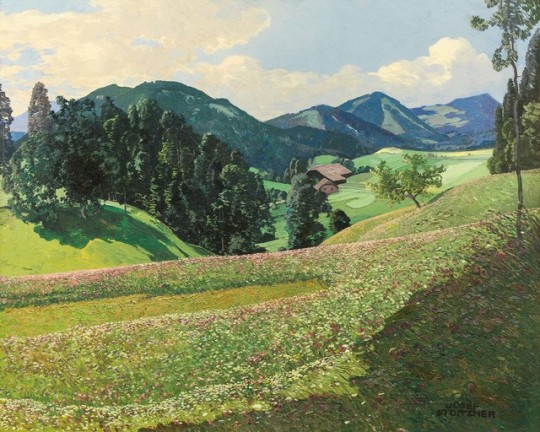
Josef Stoitzner
Blooming Alpine Upland, ca. 1900
Oil on cardboard
163 notes
·
View notes
Photo
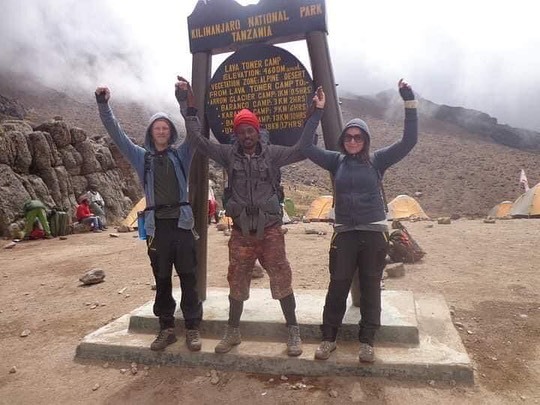
Mount Kilimanjaro is a dormant volcano in Tanzania. It has three volcanic cones: Kibo, Mawenzi, and Shira. It is the highest mountain in Africa and the highest single free-standing mountain in the world: 5,895 metres above sea level and about 4,900 metres above its plateau base. Dominating the landscape like no other mountain, iconic and instantly recognisable, Kilimanjaro in Tanzania is the highest peak in Africa and the world's tallest freestanding mountain at 5895 metres. To climb Kilimanjaro is a great challenge and entirely feasible for the active traveller or keen walker looking for something new. In a matter of days you’ll climb Kilimanjaro from the hot plains of Africa through grasslands, tropical rain forest, alpine meadows, moorlands and desert uplands onto snow and ice. #Hiking #adventures #climbing #mountainnering #mountains #kilimanjaro #trekking #highmountains Book with us ; www.worldsafariland.com [email protected] Tel. +255787637816 +254719517439 https://www.instagram.com/p/CTY2OwwMY7p/?utm_medium=tumblr
2 notes
·
View notes
Photo
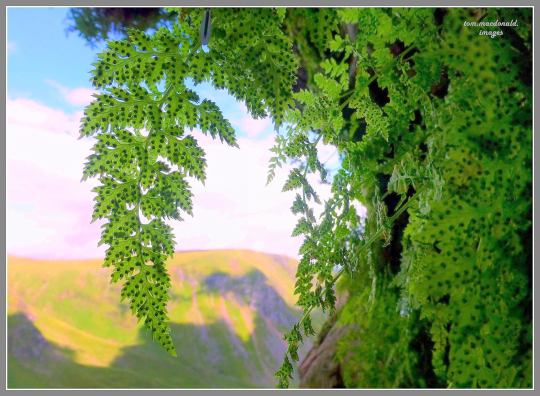
Woodsia alpina (Alpine Woodsia), a rare upland fern showing off spore form, Photographed on Cainlochan cliffs of Glas Moal, Glenshee hills by Tom MacDonald, 28/7/2004.
#2004#botany#wild plants#nature#ferns#woodsi alpina#uplands#mountaineering#cainlochan#scotland#tom macdonald collection
1 note
·
View note
Photo

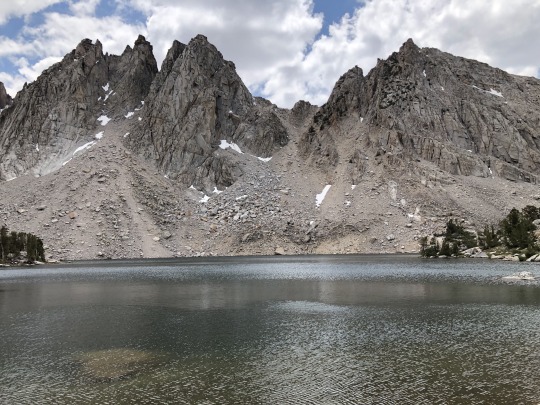
“The higher parts of the Sierra--that part deserving Muir’s Range of Light appellation--look quite different [than the Alps]. As my Swiss acquaintance noted, lakes are widespread and nearly unavoidable; one small basin in Kings Canyon National Park is called Sixty Lakes Basin and the number is, by my count, an underestimate. Muir too had noted all the lakes: ‘All the upper branches of the rivers are fairly laden with lakes, like orchard trees with fruit.’ And while the range is quite rugged, low-elevation valleys like those hosting Interlaken and Visp (not far from the Matterhorn) do not extend deeply into the Sierra. Erosion rates measured in the high uplands of the Sierra are tiny by Alpine standards, perhaps one hundred times less intense, so the absence of such valleys is not too surprising given that erosion only started really attacking these mountains in the past roughly ten million years.” --Craig Jones, The Mountains that Remade America
Photos: Kearsarge lakes, Kings Canyon National Park (my photos, June 2021)
4 notes
·
View notes